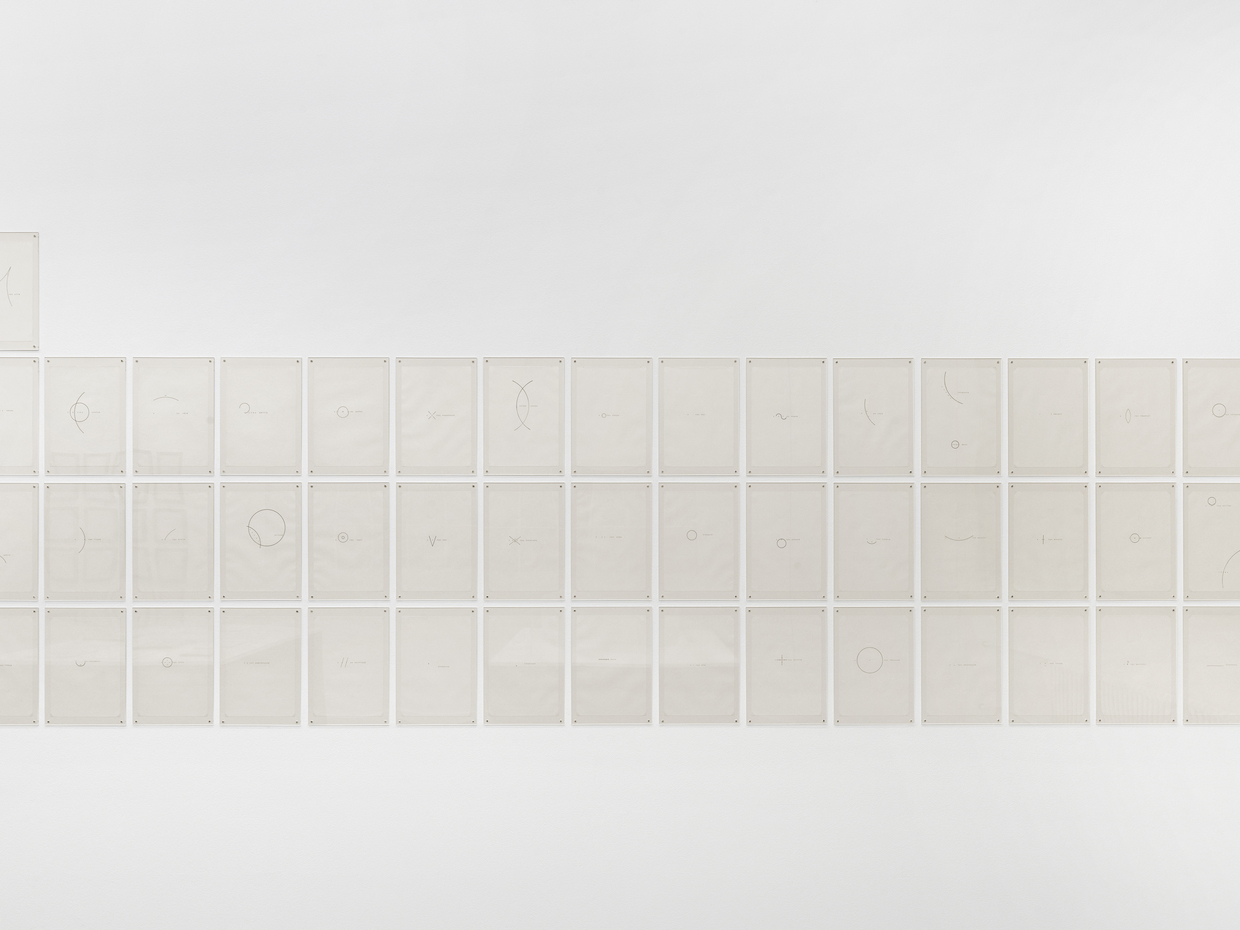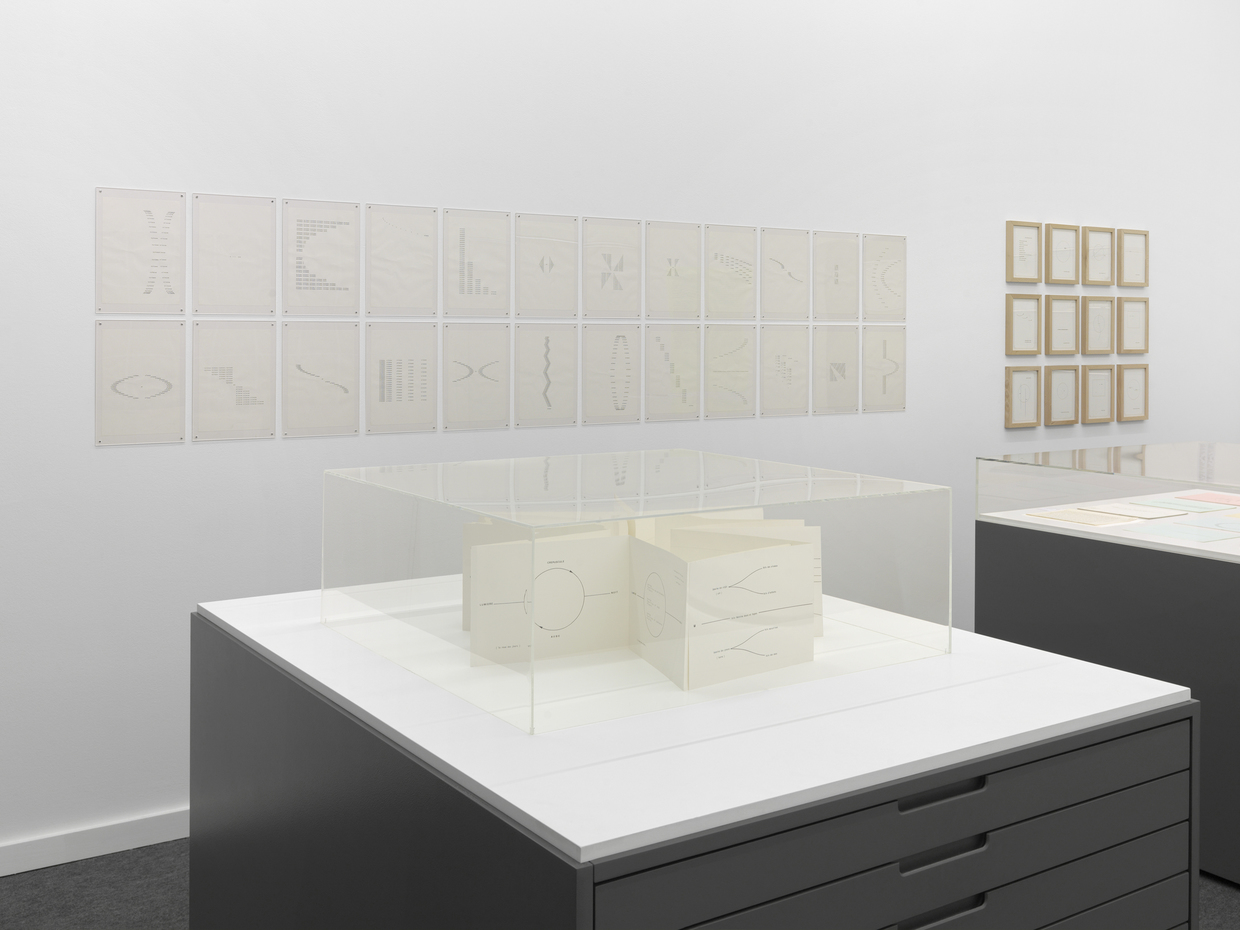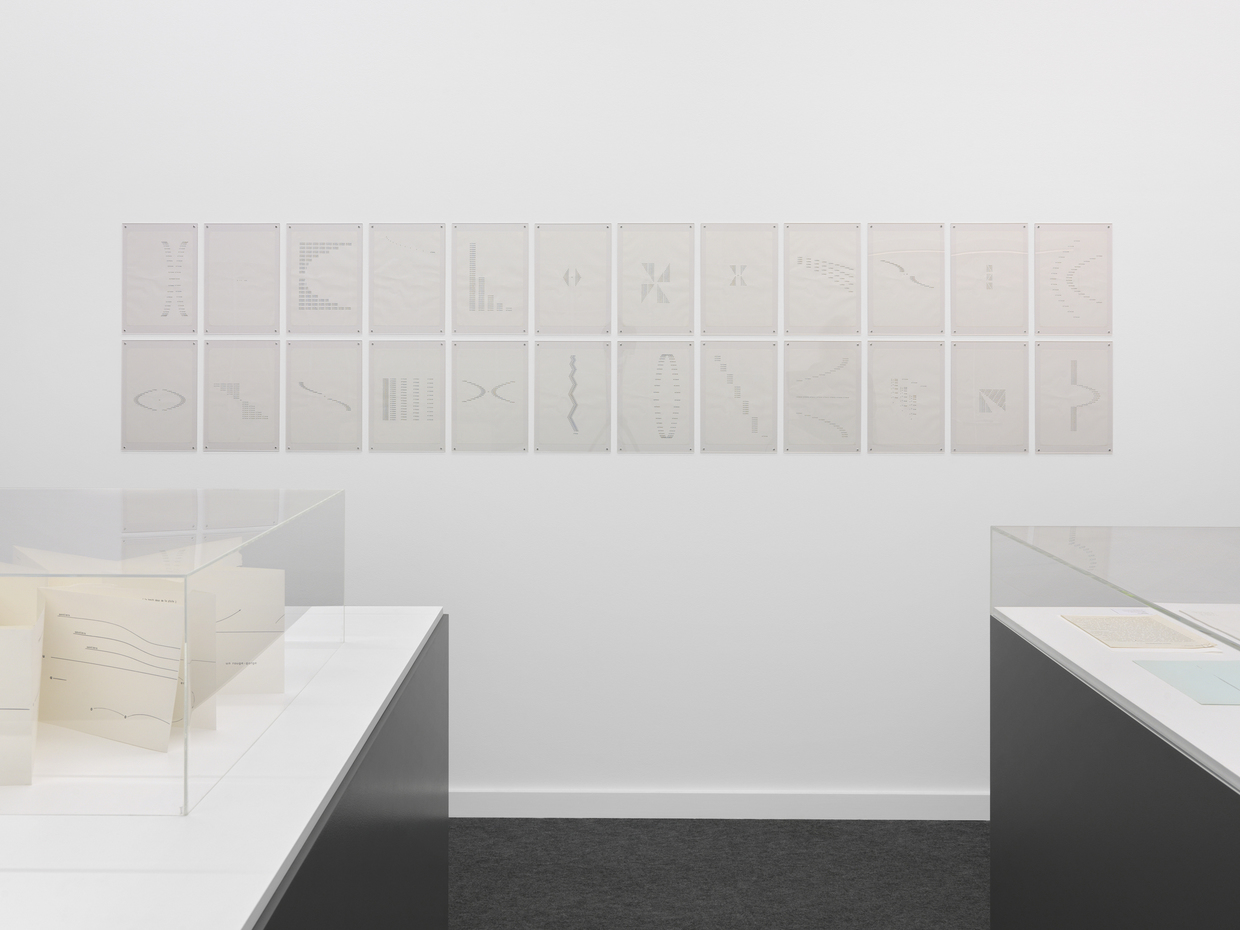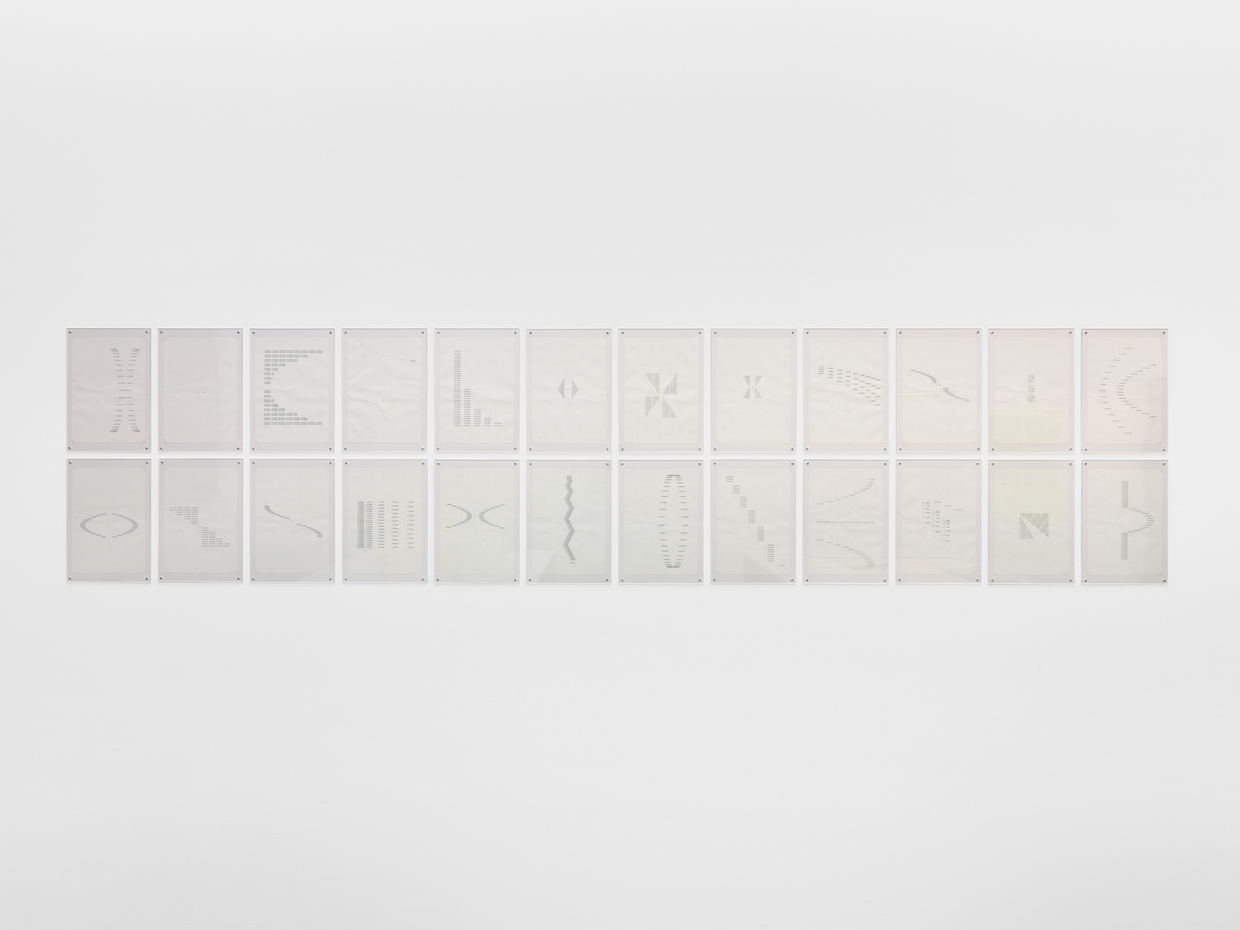The exhibition presents an important set of works by Ilse Garnier (1927-2020). In 1962, Ilse and Pierre Garnier (1928-2014) took over the magazine Les Lettres, published by André Silvaire, and focused it exclusively on spatial, visual, concrete, and sound poetry. “To me, all these poems seemed related in terms of space, considered as the essential structural agent of poetry, hence the name of the journal of spatialism” (P.G.). Ilse Garnier, who left Germany for France in 1950, said of this new form of poetry: “In Germany, the language had been so politicized, abused, that we needed to get rid of it... Basically a new language... We needed a poetry in correspondence with our time, the modern, supranational society, which no longer looked only at the earth but at space.”
In January 1963, in the issue 29 of the magazine, Pierre Garnier published his Manifeste pour une poésie visuelle et phonique [Manifesto for a visual and phonic poetry], “spatialism’s” seminal text. This movement (unrelated to Lucio Fontana’s) defended a conception of poetry where space forms its active element, able to influence the words’ meaning. Poetry is therefore seen as an art of setting in space and required a liberation of the word, whose forgotten or even repressed potential must be revealed through its sound and visual material. The Garnier’s wrote: “Free the words. Respect the words. Do not enslave them to sentences. Let them occupy their own space. They are not meant to describe, teach or tell: they are primarily meant to be. Words exist only in the wild. The sentence is the civilized state of words.”
This liberation also involved a sound dimension: Pierre Garnier started making his “Sonies” from 1963 onwards, where the breath is a driving and structuring element. The couple’s research into the language’s objectification led them to work on the “aesthetic information of words.” In Prototypes-Textes pour une architecture [Prototypes-Texts for Architecture] (1965), the spatial dimension of poetic language can be experimented with functional manufactured objects to create a living, “habitable poetry.” The Garniers thus showed a desire for an active participation of poetry within society.
- Exhibition organized by Julien Fronsacq, in collaboration with Badischer Kunstverein (Karlsruhe), Anja Casser, and Alex Balgiu



